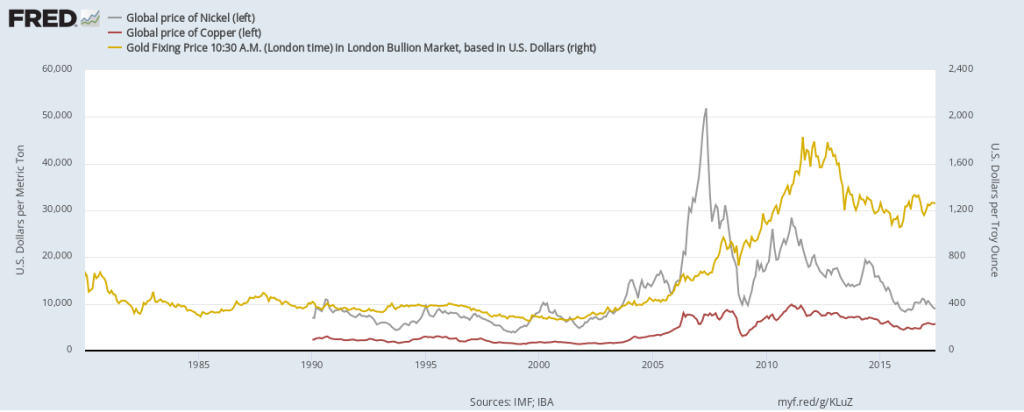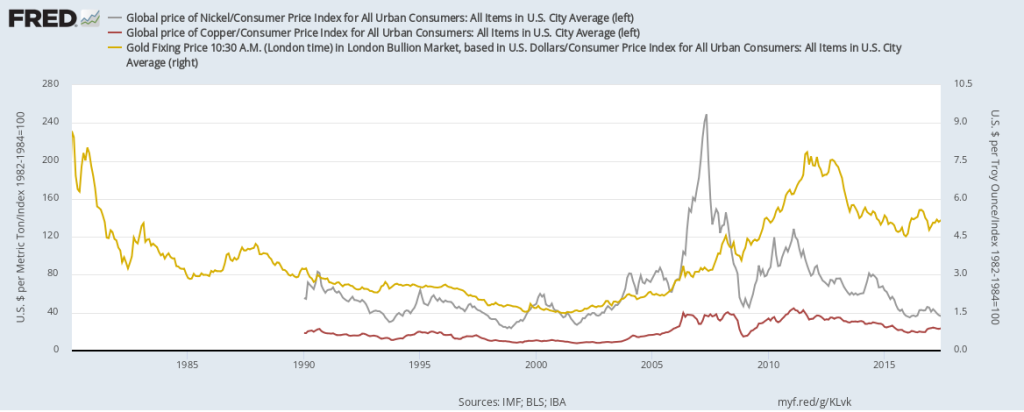The U.S. federal debt has been rising steadily since the Great Recession and is currently 103 percent of GDP. So let’s enlist FRED to help us study the sustainability of this debt by looking at how much it costs to service it.
Neil Mehrotra recently described the cost of servicing public debt as dependent on the gap between the real interest rate on debt and the growth rate of real GDP: This gap captures the difference between the interest the government must pay to its lenders, in real terms, and the pace at which U.S. income increases. If U.S. income increases more rapidly, then interest payments on U.S. debt shouldn’t be a major burden.
The graph plots this measure of the cost of servicing the debt. (Here, the growth rate of real GDP is the sum of real GPD per capita growth and population growth, and the real interest rate is the difference between the interest rate on a 10-year Treasury bond and the CPI inflation rate.) The graph presents an interesting picture. In the years since the Great Recession, the cost of servicing public debt has been negative, which means that the burden of U.S. public debt is low. Since 1960, negative debt servicing costs have occurred nearly 63 percent of the time; and the average cost of servicing debt is -0.67%. In fact, since the 1960s, the only time period in which the real interest rate was consistently greater than the growth rate of real GDP was from 1981 to 1995.
Interest rates have been low since the previous recession, but they have been on an upward trajectory lately, which may increase the cost of servicing the federal debt.
How this graph was created: Search for and select the series “Constant GDP per capita for the United States.” From the “Edit Graph” panel, set the frequency to “Annual.” Then add three more series in this order to the same line: “Population Growth for the United States,” “10-Year Treasury Constant Maturity Rate,” and “Consumer Price Index for All Urban Consumers” (all at anual frequencies). Set the units for constant GDP per capita to “Percent Change from Year Ago” and the units for CPI inflation to be “Percent Change.” Then, in the Formula bar, enter the formula c-d-a-b.
Suggested by Asha Bharadwaj and Maximiliano Dvorkin.


